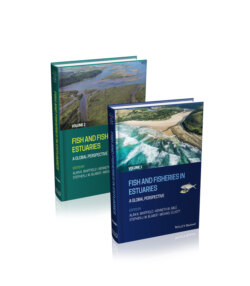Читать книгу Fish and Fisheries in Estuaries - Группа авторов - Страница 24
2.1 Introduction
ОглавлениеChapter 1 (Whitfield et al. 2022) introduced the broad nature of the estuarine environment, the great variety of typologies and habitats, the highly variable physico‐chemical conditions which the biota living in these systems have to tolerate, and the rich and diverse foraging opportunities that estuaries provide for fishes. This chapter examines how zoogeography and estuarine typology in particular can influence fish assemblages, as well as focussing on a global classification of estuary‐associated fish species that places them into functional groups and guilds according to the ways in which they utilise these systems and their feeding and reproductive strategies. One of the main benefits of such an approach is that it facilitates ecological comparisons on a regional, continental and global scale.
Fishes inhabiting estuaries have been studied worldwide and there have been several attempts to define the common features of those assemblages (e.g. Yáñez‐Arancibia et al. 1988, Whitfield 1990, Blaber 1991, Potter & Hyndes 1999). In addition to supporting their own resident fish community, estuaries provide nursery grounds, migration routes and refuge areas for a variety of fish species (e.g. Yáñez‐Arancibia et al. 1980, Whitfield 2019). Given the increasing wealth of data, it is possible to determine the ways in which fish communities are similar and differ among biogeographical areas and are thus able to elucidate the features of estuarine fish community structure on a global scale (Potter et al. 1990, Blaber 2000, Elliott & Hemingway 2002, Whitfield 2005, Able & Fahay 2010, Tweedley et al. 2016). The role of salinity as a driver of fish composition is also dealt with in some detail.
